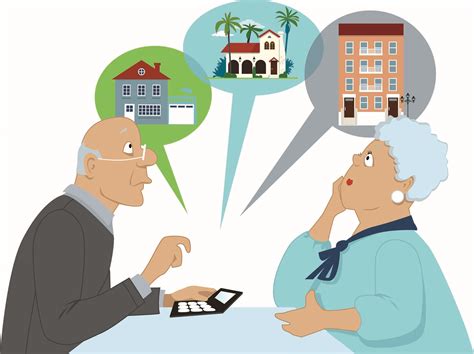Aging in place is a popular choice for seniors who wish to maintain their independence while staying in the comfort of their own homes. This guide will explore the essentials of aging in place, highlighting the benefits and how local resources can make this journey easier. From healthcare options and home safety modifications to social engagement and financial assistance, we cover everything seniors and their caregivers need to know. Whether you’re seeking nearby services or technology solutions to enhance daily living, our comprehensive approach will help you or your loved ones age gracefully at home. Join us as we share insights and real-life examples that demonstrate the possibilities of a fulfilling, supported life at home.
Join ujocis.net as we delve deeply into this topic.
1. Introduction to Aging in Place
Aging in place is the choice to remain living independently in one’s own home for as long as possible, even as physical and cognitive abilities naturally decline with age. This approach has gained significant popularity among seniors who value the comfort and familiarity of their surroundings over relocating to assisted living facilities or nursing homes. The ability to maintain control over daily routines, stay connected with their community, and live in an environment they hold dear are all benefits of aging in place. However, it also presents challenges, including safety concerns, healthcare needs, and maintaining social engagement. By acknowledging these factors and making proactive preparations, seniors and their families can make informed decisions that promote a high quality of life at home. This guide aims to offer a comprehensive overview of the steps, resources, and strategies involved in aging in place, making it a viable and rewarding option for local seniors. From accessible home modifications to community support networks, we will explore the essential elements that contribute to seniors living comfortably and safely within their own homes.

2. Benefits of Aging in Place for Seniors
Aging in place provides numerous benefits for seniors, significantly enhancing their quality of life and emotional well-being. Remaining in a familiar environment, surrounded by personal belongings and memories, provides comfort and a sense of identity. This continuity in their living space reduces stress and anxiety often associated with transitioning to new surroundings. Staying at home allows seniors to maintain independence, make their own choices, and follow their preferred routines without disruption. It also fosters a stronger connection with their community, keeping them close to friends, neighbors, and local services that provide essential social interaction and support. Additionally, aging in place can be more cost-effective compared to long-term care facilities, allowing for tailored solutions that meet individual needs without the higher expenses associated with institutional care. Overall, this approach promotes a dignified and fulfilling lifestyle for seniors.

3. Local Resources and Services for Seniors
For seniors seeking to age comfortably and safely in their homes, access to local resources and services is paramount. Many communities provide a diverse array of support options tailored to the unique needs of older adults, encompassing healthcare, social engagement, and more. Local senior centers serve as vital hubs for social connection, offering group activities, exercise classes, educational programs, and supportive networks that combat social isolation. Furthermore, meal delivery services like Meals on Wheels deliver nutritious meals directly to seniors’ doorsteps, addressing their dietary needs and promoting overall health.
Seniors who no longer drive can still enjoy convenient and affordable transportation options for essential errands like medical appointments, grocery shopping, and community events. Home care agencies provide a helping hand with daily tasks, including housekeeping, medication management, and personal care, enabling seniors to maintain their independence within the comfort of their own homes. For those with more complex medical needs, local healthcare providers and in-home nursing services are available to deliver tailored care that meets individual requirements.
Finding the right resources for seniors can be challenging. Thankfully, many communities offer senior advocacy programs to help individuals and their families navigate the process. By taking advantage of these local resources, seniors can remain active, maintain their quality of life, and receive the support they need to continue living independently at home.

4. Home Modifications for Safety and Accessibility
For seniors who want to age comfortably in their own homes, making modifications is crucial for safety and accessibility. Simple adjustments, such as installing grab bars in bathrooms, non-slip mats, and handrails on staircases, dramatically lower the chance of falls and injuries. Widening doorways and hallways, or installing ramps, makes it easier for people using walkers or wheelchairs to navigate their home. Finally, improving the lighting in hallways, stairwells, and entryways helps prevent accidents by making it easier to see.
Smart home technology significantly contributes to a safer living environment, offering features like motion-sensor lights, voice-activated assistants, and medical alert systems that enhance peace of mind. Simple adaptations, such as lowering countertops and cabinets or strategically placing essential items, can dramatically improve daily living. These modifications not only promote safety but also empower seniors to maintain their independence, enabling them to navigate their homes with greater ease and confidence.
5. Healthcare Options and Providers Near You
Aging in place hinges on access to reliable healthcare, and locating suitable providers in your vicinity can significantly improve your ability to manage health needs. Communities often offer a wealth of healthcare options designed specifically for seniors, including primary care physicians, specialists in geriatrics, and home health care services. These providers possess the expertise to address the unique medical requirements of older adults, encompassing the management of chronic conditions, preventive care, and routine check-ups.
Telehealth services offer seniors a convenient way to consult with healthcare professionals from the comfort of their own homes. This technology eliminates the need for frequent trips to doctor’s offices and provides easier access to timely medical advice. Prescription delivery services offered by pharmacies ensure that medications are delivered directly to seniors’ homes, helping them stay on track with their treatment plans.
Local healthcare facilities, such as hospitals and clinics, frequently provide specialized senior care services. These services may include rehabilitation, physical therapy, and mental health support. Additionally, community health programs often offer free or low-cost screenings, vaccination clinics, and wellness classes designed to promote senior health and well-being. By exploring these healthcare options and developing relationships with trusted providers, seniors can achieve greater peace of mind. They can feel confident knowing they have access to comprehensive medical care close to home, which helps them maintain their independence and healthy lifestyle.
6. Community Support and Social Engagement Opportunities
Staying connected and engaged in the community is crucial for seniors who choose to age in place. Many local organizations and senior centers provide programs specifically designed to encourage social interaction and build a sense of belonging. These centers offer a wide range of activities, such as art classes, exercise programs, game nights, and group outings, allowing seniors to connect with their peers and forge new friendships.
Volunteering provides an exceptional avenue for seniors to maintain active involvement in their communities. Numerous organizations enthusiastically embrace the expertise and life experiences of older adults, fostering opportunities for meaningful contributions and combating social isolation. Whether it entails guiding younger generations, aiding in local events, or participating in community beautification projects, volunteering serves to enhance seniors’ mental well-being and overall quality of life.
Furthermore, support groups centered on topics like caregiving, managing chronic illnesses, and grief provide seniors with a platform to share their experiences and receive emotional support. Numerous communities also offer transportation resources, allowing seniors to participate in events and activities beyond their local areas. Through active engagement with their communities and the utilization of available resources, seniors can foster meaningful connections, enrich their lives, and improve their emotional well-being, all while enjoying the comfort of aging in place.
7. Financial Planning and Assistance Programs
Aging in place requires careful financial planning. By managing resources effectively, seniors can maintain their independence. Understanding the potential costs of home modifications, healthcare, and daily living is crucial for creating a sustainable budget. Many seniors may be eligible for financial assistance programs designed to support their needs.
Government programs like Supplemental Security Income (SSI), Medicaid, and Medicare can help with medical expenses and long-term care. Furthermore, local nonprofit organizations and community agencies frequently offer grants or subsidies to assist with home repairs, modifications, and essential services.
Seniors would be well-served to seek the advice of financial advisors specializing in elder care. These professionals can create personalized plans that address each individual’s financial needs. They can offer guidance on managing assets, budgeting for future healthcare costs, and exploring financing options like reverse mortgages or home equity loans to cover essential home modifications.
In addition, numerous community organizations provide workshops and resources specifically designed to enhance the financial literacy of seniors. By participating in these programs, seniors can improve their financial well-being, giving them the confidence and resources needed to age comfortably and independently in their own homes.
8. Technology Solutions to Assist Aging in Place
Technology is revolutionizing how seniors age in their own homes, boosting safety, convenience, and connectivity. Smart home devices, including voice-activated assistants, empower seniors to control lights, thermostats, and security systems remotely, minimizing the need to physically move around their residences. This significantly reduces the risk of accidents and makes everyday living more manageable.
Medical alert systems provide seniors with peace of mind by facilitating quick emergency assistance. Many of these systems now include fall detection capabilities, guaranteeing immediate help in the event of a fall. Furthermore, telehealth services are increasingly popular, allowing seniors to connect with healthcare providers remotely. This reduces the need for travel and makes routine check-ups more accessible.
Wearable fitness trackers and blood pressure monitors are examples of health monitoring devices that empower seniors to take a proactive approach to their well-being. These devices typically connect to smartphones or tablets, allowing users to effortlessly track vital signs and share the data with healthcare providers.
Furthermore, social media and communication platforms facilitate seniors’ ability to maintain contact with loved ones, mitigating feelings of loneliness. Embracing these technological tools allows seniors to foster a supportive and secure environment, thereby rendering aging in place a feasible and fulfilling option.
9. Case Studies of Successful Aging in Place
Successful aging in place offers valuable lessons for seniors seeking to thrive in their own homes. Take, for example, Mrs. Johnson, an 82-year-old widow who chose to stay in her family home after her husband’s passing. She made strategic home modifications, including grab bars in the bathroom and a ramp at the entrance, significantly improving her safety and accessibility. Local senior services provided meal delivery programs and transportation assistance, enabling her to maintain her independence while actively engaging in her community.
Mr. Smith, a retired veteran, is another inspiring example of someone who has embraced technology to support his aging journey. He utilizes a medical alert system for emergencies and relies on telehealth services for routine check-ups. Furthermore, he actively engages in social activities through local senior centers, even establishing a weekly walking group with fellow seniors, which has fostered both his physical health and social connections.
These success stories demonstrate the value of a comprehensive approach to aging in place, integrating home modifications, community resources, and technology. This creates an environment that fosters safety, independence, and social interaction. By drawing inspiration from these examples, other seniors can acquire the motivation and strategies necessary to flourish within their own homes.
10. Tips for Caregivers Supporting Seniors at Home
Supporting seniors who desire to age in place relies heavily on the role of caregivers. Implementing effective strategies can improve the caregiving experience for both parties involved. Open communication is paramount. Caregivers should engage in regular check-ins with seniors to understand their individual needs, preferences, and any concerns they may have about their care or living situation.
A structured routine can significantly benefit seniors. By establishing consistent daily activities, including regular meal times, exercise, and social engagements, they gain a sense of security and control over their surroundings. Furthermore, creating a safe and accessible home environment is crucial. Conducting regular safety checks to identify potential hazards and implementing necessary modifications, such as removing clutter, improving lighting, and ensuring easy access to essential items, can greatly enhance their well-being and independence.
Encouraging independence is paramount. Allow seniors to participate in decisions regarding their care and daily activities, fostering a sense of autonomy. Furthermore, utilizing community resources and support services can alleviate caregiver burnout. Engaging local senior programs provides seniors with social opportunities, offering caregivers a much-needed break. Finally, nurturing a positive and compassionate relationship can significantly enhance both the caregiver’s and the senior’s overall well-being, creating a supportive environment for aging in place.
Aging in place offers seniors the opportunity to maintain their independence and quality of life while remaining in the comfort of their own homes. By utilizing local resources, making necessary home modifications, and embracing technology, seniors can successfully navigate the challenges of aging. Caregivers play a vital role in this journey, providing support and encouragement while fostering independence. With the right strategies in place, seniors can enjoy a fulfilling life surrounded by familiar surroundings, social connections, and the healthcare services they need. Ultimately, aging in place is a viable and enriching option for many older adults.
ujocis.net

